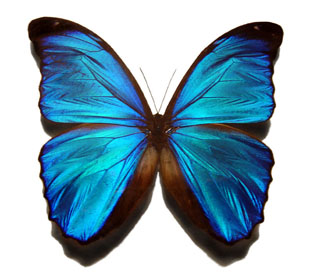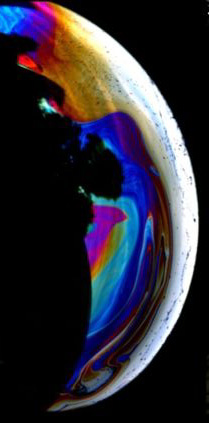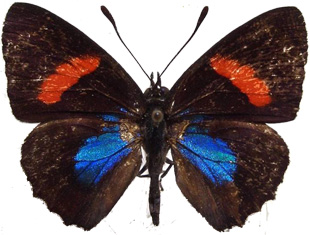
 |
|
We
study a variety of colors produced in the biological world focusing on
a variety of interesting objects that include butterfly wings, bird feathers
(humming birds, peacock feathers, duck feathers), all of whose colors
are due to interference, the Hercules beetle (use of color for camouflage),
moths which produce color both by interference and diffraction, interference
filters in the compound eyes of butterflies, and biological analogues
of cholesteric liquid crystals (optically active scarab beetle cuticles).
The case of cholesteric liquid crystals will serve to illustrate the elegance
with which metallic colors are produced by the scarab beetles. A common
unifying theme, in considering this diverse set of materials, is the nature
of color generation. In all of these materials, color is generated in
the absence of chromophores, primarily by structural variations resulting
in interference, diffraction, or scattering.
|
|
 |
||
Interference |
Selective
reflection |
|
The finely colored feathers of some birds, and particularly of Peacock
tails appear to possess different color by changing the position of eyes.
This is remarkably similar to colors in light seen from thin films or
plates and thus indeed result from slenderness of the very fine hairs
or Capillamenta which grow out of the grosser lateral branches or fibers
of those feathers. |
 |
|
| When
one looks at the wing, it becomes evident that on a given patch of wing
there are typically two and sometimes three types of scales, which alternate
positions on a roof-tiles-like arrangement. The larger "cover"
scales and the smaller "ground" scales are arranged in an alternating
fashion. In most cases, the cover scales tend to be architecturally more
elaborate, although oftentimes the ground scales may show a similar architecture.
The form of both cover and ground scales can change from a given patch
of the wing to the next. The density of the scales varies from about 200
to 500 scales per square millimeter. The scales making up the color pattern
that is seen on the wings are quite delicate. Anyone who has handled a
butterfly by its wings would have noticed that the scales rub off easily
along with the color pattern.
At high magnification it becomes evident that the color pattern is a result of a finely tiled mosaic, with each tile of the pattern being made up of a single wing scale containing structural features which is responsible for color. This is schematically shown in Figure below, where the butterfly and its wing structure are shown at increasing magnification. The entire color pattern is then made up of single colored tiles, often comprising between three and five colors, and the unique variations in color and hue are created just by varying the number and density of the different colored scales on the wings. |
|
Structural
variations that give rise to the beautiful colors of butterfly wings.
In the center is a schematic cut-away view of a scale fragment showing
the upper and lower layers, ridges, crossribs, ridge-lamellae, and microribs.
(A) Ridges that produce thin-film reflectors giving rise to the colors.
(B) Flats between the ridges may have an elaboration that gives rise to
color due to scattering. (C) Lamella/microrib system now becomes the structure
producing color. (D) Structure where the microribs fills the space and
are the structural elements. (E) Flats may be filled with plates and pores
pattern. (F) Interior of the scale may be filled with body-lamellae that
now become the elements of a thin-film reflector. (G) Scales may be filled
with a crystalline lattice that produce diffraction colors and may behave
as zero-order gratings. (Reprinted with permission from Ghiradella, H.
Microsc. Anat. Invet. 1998, 11A, 257. 1998, Wiley-Liss.) |
|